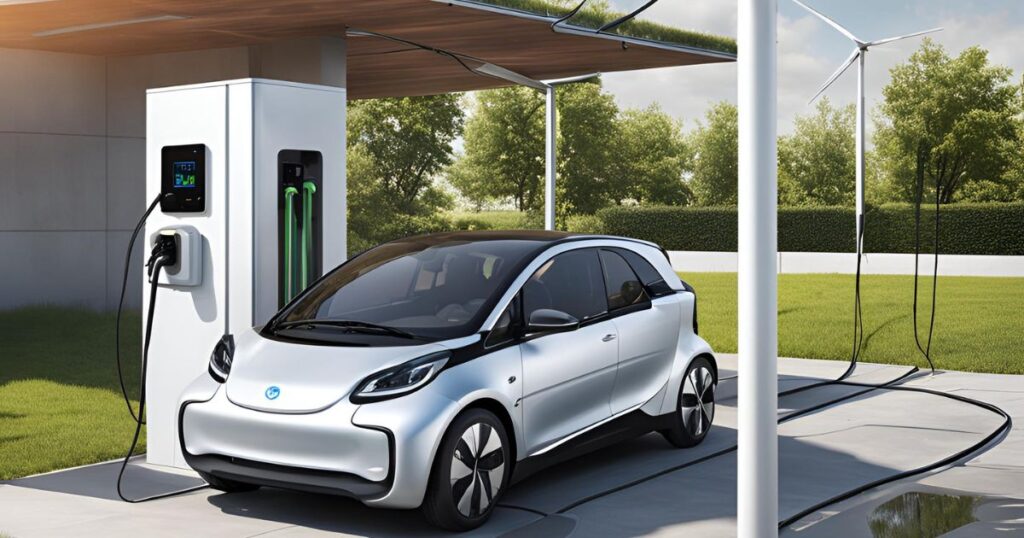This article is included in these additional categories:
As EVs become increasingly popular, understanding their environmental impact—particularly the carbon footprint associated with their charging—is essential. Several factors influence the carbon emissions from EV charging, including the source of electricity, the grid mix, charging times, vehicle efficiency, and lifecycle emissions.
Electricity Source
Charging an EV with electricity from renewable sources such as wind, solar, or hydroelectric power results in significantly lower carbon emissions. For instance, an EV charged with electricity from wind power generates less than 0.1 lbs of CO2 per mile, compared to over 1.0 lbs of CO2 per mile for a gasoline vehicle. This contrast highlights the benefits of renewable energy.
On the other hand, electricity generated from fossil fuels like coal or natural gas results in higher carbon emissions. For example, an EV charged using coal-fired power plants can produce up to 50% more CO2 than a gasoline vehicle. The carbon intensity of the electricity used for charging plays a crucial role in determining an EV’s overall carbon footprint.
Grid Mix
The composition of the electricity grid in a given region significantly impacts the carbon footprint of EV charging. Areas with a higher share of renewable energy and lower reliance on fossil fuels have a cleaner grid mix. In 2022, the U.S. grid mix included approximately 60% fossil fuels, 20% nuclear, and 20% renewables.
With over 30% renewable energy, states like California offer a lower carbon footprint for EV charging than regions with less renewable energy. Conversely, regions with a higher dependence on fossil fuels, such as certain areas in the Midwest and South, will have a higher carbon footprint associated with EV charging. The carbon intensity of the electricity grid in these areas can significantly impact the emissions from charging EVs.
Time of Charging
During peak solar production hours, solar power can contribute up to 30% of the grid electricity in some regions. This availability of cleaner energy during daylight hours helps lower the emissions associated with EV charging. In contrast, charging at night may result in a higher carbon footprint, as the grid often relies more on fossil fuels during these hours. This increased reliance on non-renewable energy sources during nighttime can raise the overall emissions from charging EVs.
Efficiency of the Vehicle
EVs with higher energy efficiency require less electricity to travel the same distance. For example, the Tesla Model 3 has an energy consumption rate of approximately 24 kWh per 100 miles, making it more efficient than models that may consume 30 kWh per 100 miles. More efficient vehicles thus have a lower carbon footprint per mile traveled. On the other hand, vehicles that consume more energy per mile will result in a higher total carbon footprint. Improving vehicle efficiency through advancements in technology and design can help mitigate this impact.
Lifecycle Emissions
The production of EV batteries, particularly lithium-ion batteries, is carbon-intensive. The International Council on Clean Transportation estimates that producing these batteries generates approximately 61 to 106 kg of CO2 per kWh of battery capacity. This contribution to the lifecycle emissions must be factored into the overall environmental assessment of EVs.
End-of-life disposal and recycling of EV batteries also have environmental impacts. Despite the energy-intensive nature of battery production and disposal, EVs generally have lower overall lifecycle emissions than gasoline vehicles. The reduced emissions from driving an EV over its lifetime often outweigh the emissions from manufacturing and disposal, especially as renewable energy sources become more prevalent.
The Future of EVs
Multiple factors, including the source of electricity, the grid mix, the timing of charging, vehicle efficiency, and lifecycle emissions, influence the carbon footprint of charging an electric vehicle. While EVs typically offer a smaller carbon footprint than traditional gasoline vehicles, their environmental benefits are maximized when charged using renewable energy sources. As the energy grid incorporates more clean energy and technological advancements improve vehicle efficiency, the overall carbon impact of EVs will continue to decrease, supporting sustainability and climate action goals.
Original Story at www.environmentenergyleader.com
